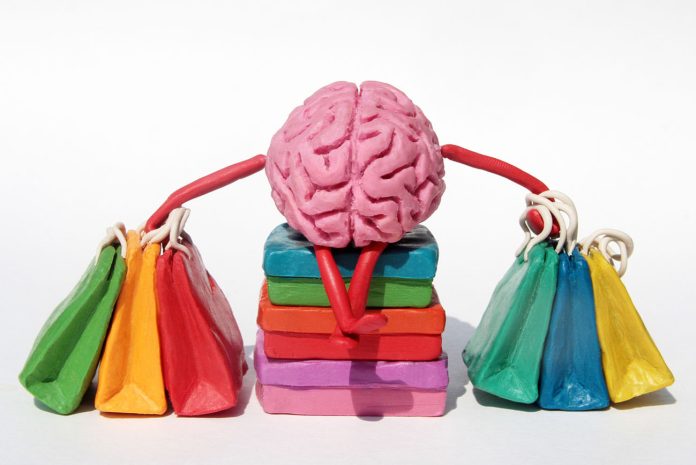Online businesses looking to successfully market their products and improve their profit margin need to understand how consumers make the decisions to buy products or services. However, the consumer’s decision-making process can be influenced by several factors.
Elements like color, sound, logo, and business signage can, directly and indirectly, influence the decision-making process of an online shopper. Understanding how online consumers search and choose the products they need as well as knowing what it takes to make a sale can help you avoid abandoned carts, win more customers, and repeat sales.
To achieve all that, you’ll need to understand the basic psychology behind online shopping and how that differs from the brick-and-mortar shopping decision-making process.
The psychology behind shopping
When consumers decide on whether to make a purchase, they typically follow a similar decision-making pattern. Here are four phases that will help you understand the phases that consumers go through when deciding to buy a product.
- Attitude Formation
The attitude formation phase encapsulates the relationship between the information that a retailer communicates with its audience and the attitude of every individual buyer. In this decision-making phase, the consumers determine their attitudes towards your business and its services/products, based on the information they get from the market or business when shopping online.
When an e-commerce business markets a product, shoppers will act positively or negatively towards their marking tactics based on their beliefs or personal experiences. That means it’s essential for businesses to understand how to appeal to their target audience when communicating with their prospects.
- Evaluation
Evaluation is the crucial stage in the consumer decision-making process, during which individuals actively seek out and gather information regarding a specific product. This phase involves a thorough examination of various aspects related to the product, enabling consumers to make informed and prudent choices.
Consumers engage in meticulous research, utilizing resources such as online reviews, expert opinions, and product specifications to gain a comprehensive understanding of the product’s features and benefits. They carefully weigh the pros and cons, comparing the product’s attributes with their individual requirements and preferences.
For instance, let’s consider the perspective of online casino enthusiasts who are in search of trustworthy platforms to indulge in their gaming passion. As they embark on their quest for a reliable online casino site, they delve into a detailed Kaboom slots casino review. This review serves as valuable tools, providing insights into the casino’s game offerings, security measures, payment options, user experience, and customer service.
- Customer behavior
If the online shopper is satisfied with the product, they’ll be motivated to purchase a product and become a customer. Although the consumer decides to buy the product at this phase, the decision-making process continues.
- Feedback
After the customer interacts with the product purchased, he or she will have some feedback that they will use when considering future purchasing decisions. For example, the buyer might decide not to buy from a specific vendor if they’re not pleased with the experience or a specific product.
How online shops influence buying decisions using psychology
Whether you’re buying clothes, food, or gadgets, the businesses you’re using can use the power of psychological persuasion in influencing your decisions. That’s why online retailers keep changing the way they present their products to their consumers.
The ploy can significantly increase a customer’s unplanned spending as they buy additional items. So, how do businesses use psychology to influence buyers to purchase? Let’s find out!
- Buying on impulse
Studies show that about 50% of all groceries sell because of impulse buying, while about 87% of online shoppers make impulse buys. While it’s complicated and affected by different factors like lack of self-control and needs for arousal, external shopping cues like free offers, discounts, and promotional displays play a crucial role.
An appealing offer can give a customer a rush of temporary delight, making it hard to make rational purchasing decisions. Most people are overwhelmed by the perceived value of a product when they buy immediately, making them ignore other considerations whether you need it or not. It’s also hard to ignore the need for instant gratitude.
Bundling is also a prominent technique that online retailers use to influence impulse buying. When two or more products are bundled at the price of one, shoppers consider it as a substantial discount and feel inclined to take advantage of it. That’s common in the gaming market, where a retailer can bundle consoles together with games.
- Subtly directing the customer’s journey
To encourage larger purchases, increase the value of completed sales, and upsell complementary products, it’s essential to direct the customer journey, and understanding the psychology behind online shopping can help you achieve that. That means keeping the site’s navigation intuitive and easy to use, integrating links and suggestions where relevant.
The illusion of product scarcity is a powerful tool for ecommerce stores and it remains highly effective amid changing consumer behavior. For example, instead of showing stats about the number of people that have bought a particular product, many online retailers will show how many products are left available for purchase. That will give the customers the final push to complete purchasing an order without the fear of a mission out.
- Emphasize value and benefits
Whatever your customer is thinking of buying, the buyer can see the value in the product they’re purchasing regardless of the price point. If you offer something extra such as free shipping, a warranty or guarantee, expedited shipping, or other advantages, the customer might be enticed to make the purchase. Additionally, you can offer something extra like bundle deals, free gifts, and after-sale services.
















